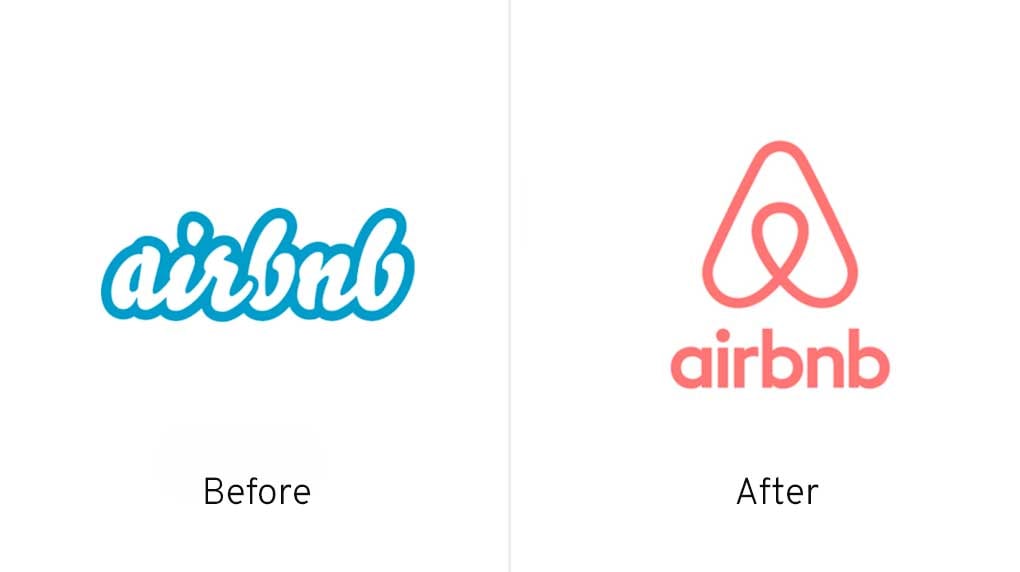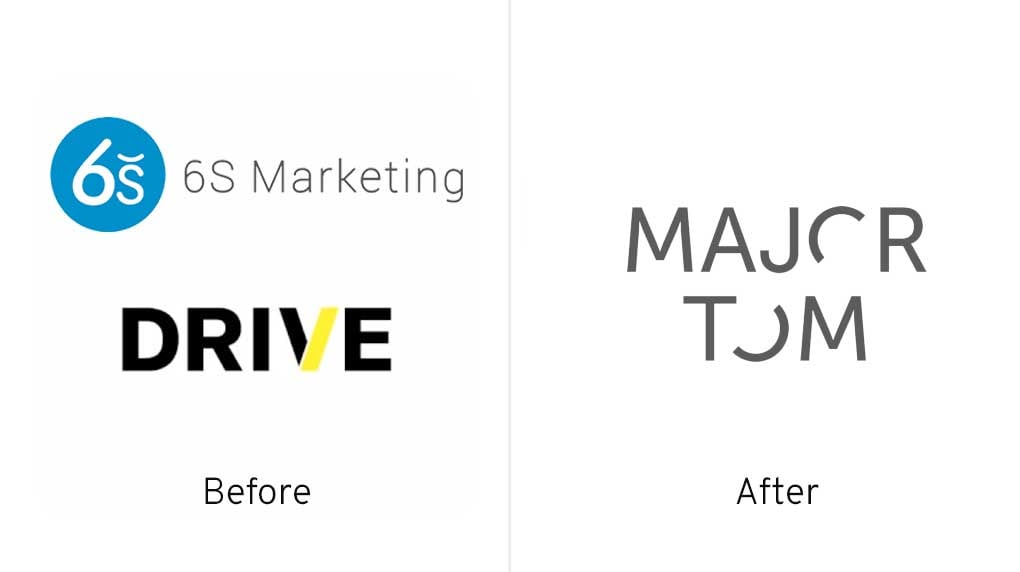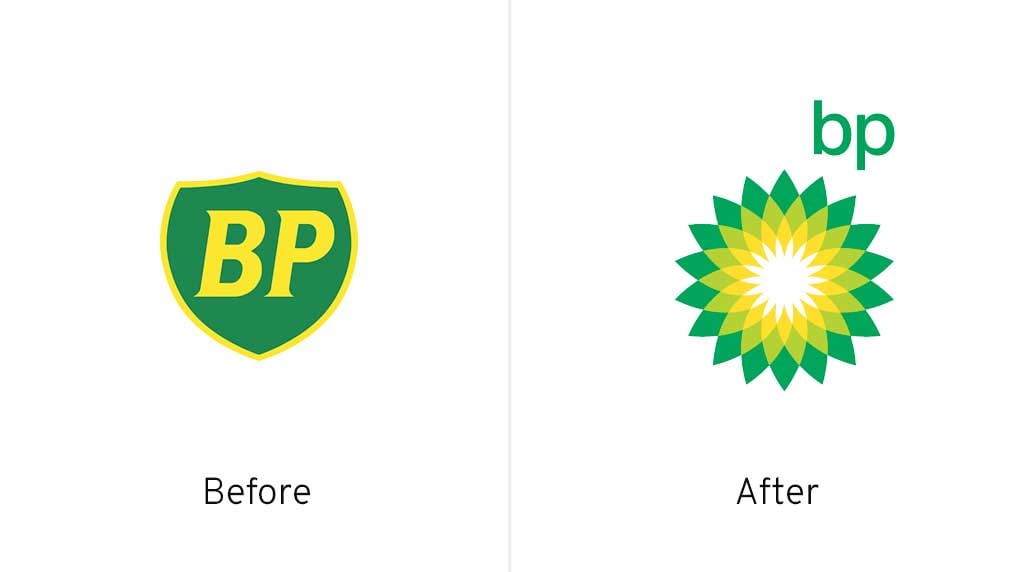Adaptation and growth: Two words associated with successful businesses. And two of the main reasons for rebranding.
If you want your brand to stay relevant, significant, and thrive in today’s landscape, then you need to be aware of the common reasons to rebrand. Corporate rebranding is said to be a signalling device, a way to communicate that something is changing. The main drivers “are decisions, events or processes causing a change in a company’s structure, strategy or performance” that suggest a need for a redefinition of identity.
Rebranding can give your business a subtle refresh or complete overhaul. It can breathe life into your business and position your brand in the hearts and minds of your customers.
Read on and discover reasons for rebranding.
Reason to rebrand #1: The evolution of market trends
Death, taxes, and evolving market trends: Three staples in life.
For example, the rise of influencer or creator marketing has changed the digital landscape. A shift in consumer values when it comes to sustainability made eco-friendly products spike in popularity. The convenience of tech has pushed for advancements in areas like telehealth and remote healthcare.
If your industry has been rocked by market trends, you’ll understand just how important it is to adapt to them. When consumer habits and opinions change, you must change with them.
Take brands with stereotypical ‘mascots,’ for example. Conversations about social justice and racial equality trended in 2021. The Black Lives Matter movement caused a shift in market trends.
Brands that faced a social reckoning included:
- Mars, Inc. (Uncle Ben’s rice),
- Quaker Oats (Aunt Jemima’s syrup), and
- Land O’Lakes (Mia, the Native American “butter maiden”).

The rebrands that followed addressed cultural appropriation issues. In many cases, the organizations made public apologies. Public perception is one of the reasons why rebranding is important.
Take a look at some other successful B2B rebranding examples here.
Technological advancements and digital transformation, specifically
Have you heard of AI? Or the evolution of smartphones? Or perhaps you were there when social media platforms rose to the top of the advertising funnel?
Technological advancements and digital advancements both deserve their own section. This is because they can be truly transformative in evolving market trends.
Digital transformations greatly affect brand image. It can impact visibility, reach, customer engagement, innovation, and convenience. eCommerce has played a role in this transformation.
Reason to rebrand #2: Changing company ethos, including values, vision, or mission
Company values and vision represent the core beliefs and long-term goals of an organization.
A new company values, vision, or mission statement can be either an outcome of rebranding or a reason for it. Your business environment, market dynamics, and leadership will change over time. As a result, your core company beliefs may also change.
A company might shift focus from profit to sustainability and responsibility. This shift can lead to a reevaluation of the brand identity. The reevaluation will result in a new corporate ethos. This ethos may include values, vision, and mission.

Reasons for rebranding #3: Mergers and acquisitions
When two brands become one, who gets to keep their identity? Simply smushing them together won't work. If you do, you’ll end up with Frankenstein’s monster and terrify the village people.
If your company is going through a merger or acquisition, it's time to consider rebranding. A rebrand can bring your new team together under one brand umbrella. It can also convey your new capabilities and reach your new audience.
A merger rebrand example is Major Tom. Major Tom began when 6S Marketing and Drive Digital recognized the need to evolve and lead in an ever-changing digital landscape and so embarked on a strategic shift.

Together, 6S Marketing and Drive Digital envisioned a new identity that combined our expanded capabilities and strategic focus. And so, Major Tom was created – a brand that symbolized united strength, innovation, and commitment to pioneering digital marketing solutions.
Reason to rebrand #4: Market changes lead to a need for repositioning
If a new competitor enters the market or market changes make your brand positioning obsolete, it's time to reposition. Remember when Netflix pushed Blockbuster out of the food chain? Blockbuster could have had a fighting chance if they had considered a change.
Repositioning your brand is a type of rebranding that doesn’t necessarily change your core identity.
A repositioning strategy lets you review different aspects of your business. You can consider products, prices, location, and promotional tactics. You could adjust your customer segments to reach an audience that shares your values.

A repositioning strategy example is Amazon. Amazon started out as an online book sales company. They kept many of their core brand tenets but evolved to better service their clientele.
Reason to rebrand #5: Revitalizing a stale brand
Brand fatigue and outdated identities are profit killers. With brand fatigue, your customers see the same message in the same way over and over and over again, and your business starts to fade into the scenery.
With an outdated identity, your brand could be looking pretty dusty. This gives people the impression that your business is old-fashioned and your model is becoming obsolete.
A stale brand rebrand example is LEGO. You would never be able to tell today, but in 2003, LEGO nearly went bankrupt. Their brand was dated, but they invested in fixing it.
LEGO modernized their advertising to focus on entertainment and digital channels to engage the kids of today. Their online efforts and investment in franchised media (hello, LEGO movie globally grossing $468.1 million) pulled them out of the dusty grave they had fallen into by reaching a modern audience and breathing new life into the brand.

Reason to rebrand #6: Responding to negative publicity
Has your company recently been involved in some less-than-positive publicity? A scandal is simply an opportunity to reinvent your brand.
We want to be clear: We’re not recommending you change your brand and continue to operate in the same method that landed you in hot water in the first place. This would likely result in a failed brand strategy.
Your leadership teams should take a moment to understand what went wrong. Then, they should make improvements to business operations. Then, a fresh rebrand can reflect the changes you’ve made and act as a new start for your organization.
A PR crisis rebrand example is BP. BP’s first rebrand — from British Petroleum to Beyond Petroleum — was a response to two massive disasters. They constituted one of the largest oil spills in Alaska’s history and the Deepwater Horizon oil rig explosion, AKA the largest marine oil spill in world history.

BP changed its name, got a new green logo, and attempted to make organizational changes. The changes swayed public opinion initially, but the oil company has recently been scrutinized again. This time, BP won’t change its name; rather, they have promised to do better and are backing it up with a detailed action plan.
Reason to rebrand #7: Global expansion strategies
Taking your organization to the global market is often a prime reason for rebranding. It's especially important for entering different cultural markets.
You must consider how a new audience will perceive your brand. And how your brand will compare to the competition. On top of that, you need also to maintain a consistent global brand identity.
A global expansion rebrand example is Coca-Cola. Coke has changed its messaging, packaging, and products in different markets. They do this to meet local tastes and preferences while keeping a global brand identity.
Want to dive deeper into this? Read up on what American companies need to consider before expanding into Canada.

Reason to rebrand #8: Legal and compliance issues
There are a few legal and compliance issues that call for a rebrand:
- High-profile lawsuits
- Trademark infringement
- Data and privacy violations
- Regulatory changes
A legal rebrand example is Abercrombie & Fitch. The documentary "White Hot: The Rise & Fall of Abercrombie & Fitch" exposed the company's mistreatment of people of colour. The company faced a lawsuit as a consequence.

Did Abercrombie & Fitch close shop after their legal troubles? Nope. They rebranded. Abercrombie & Fitch now offers size-inclusive merchandise. They also promised inclusivity. As a result, they regained shoppers' favour.
Rebranding is a powerful tool for achieving your goals
Knowing the reasons to rebrand is essential for staying competitive and relevant in today’s landscape.
Notably, rebrands happen due to:
- Evolving market trends
- Mergers and acquisitions
- Changing company ethos
- Market changes leading to repositioning
- Revitalizing a stale brand
- Responding to negative publicity
- Global expansion strategies
Rebranding isn't just about changing logos and colours. It's about aligning your brand with your evolving goals and your customers' expectations. It helps you to stay competitive, relevant, and resonate with your audience.
Take a moment to reflect on your brand identity and ask yourself if it's still in sync with your mission, vision, and the world around you. Rebranding could be the strategic move your business needs to thrive in the face of change.
Frequently Asked Questions (FAQ)
What is the main goal of rebranding? Or what is the main reason for rebranding?
Rebranding is the process of giving a brand a new identity, which can include changes to its name, logo, messaging, and more. It's important for businesses to rebrand when they need to adapt to changes, revitalize their image, or reach new audiences. Rebranding helps businesses stay competitive, relevant, and aligned with their goals and audience.
If you’re looking to rebrand, bookmark this rebranding checklist and follow the steps for a successful transformation.
What are some common mistakes to avoid during a rebranding process?
The common mistakes to avoid during a rebrand are:
- Not thoroughly researching your target audience,
- Rushing the process without a clear strategy,
- Neglecting internal communication and buy-in from employees, and
- Not properly managing the transition from the old brand to the new one.
It's crucial to plan and execute a rebranding effort thoughtfully and strategically. Major Tom can help. We can also answer, “When is it time to rebrand?” if you still aren’t sure.
What is the negative effect of rebranding?
If mistakes are made, a rebrand can actually have a negative impact on your business.
These can include:
- A loss of brand equity
- A high cost (knowing the cost of branding or rebranding can help avoid sticker shock)
- Confusion
- Uncertain outcomes
- A risk of brand dilution
What are some successful rebranding examples?
Some notable examples of successful rebranding include:
- Coca-Cola's global adaptation to local tastes,
- Major Tom's merger of 6S Marketing and Drive Digital, and
- Abercrombie & Fitch's response to negative publicity.